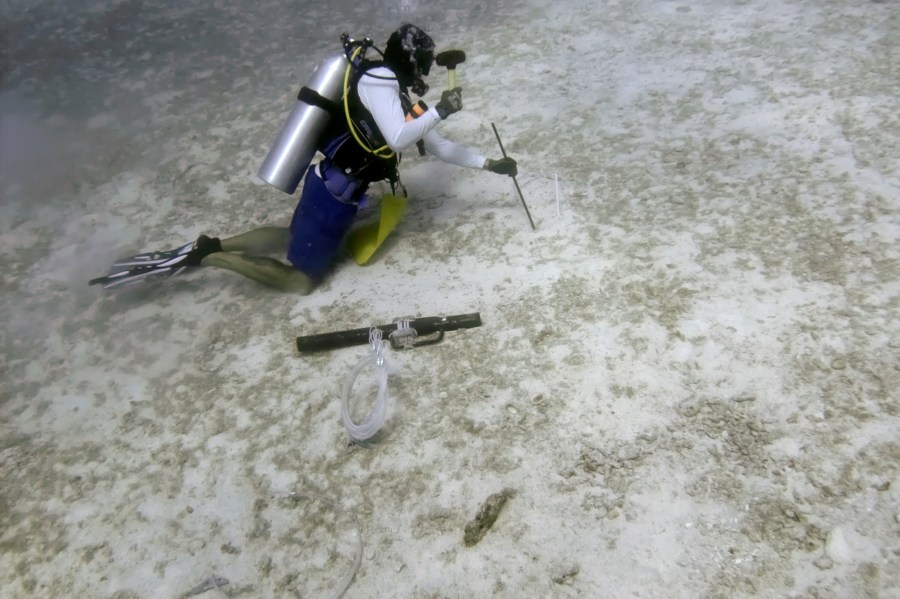
President Trump has repeatedly said that climate change is a “hoax” and a “hoax,” and he told the United Nations last month that climate change is made up by “stupid people,” even though most credible scientists agree that climate change is real and causing huge problems in the world today.
Many climate change deniers claim that scientists study climate change just to get funding, but many of us have no intention of studying it in the first place. When scientists like me work in real-world, natural environments, we cannot avoid the widespread and profound impacts of climate change.
I never thought about studying climate change. For 15 years, I have studied the effects of different types of pollution, from pesticides to personal care products to industrial fertilizers. I document quantitative evidence that human-made pollutants can have adverse effects on marine life, as well as ourselves. My early work was also conducted in the laboratory, far away from reality and the complex nature of the environment. Nowhere in these studies does climate change take into account.
It wasn’t until I started studying coral reefs in 2005 that I began to realize on an objective scientific level that climate change was always the primary driver behind the patterns in our data, even if we had no intention of studying it. Well, my research, and that of hundreds of other scientists, inadvertently revealed that the real problem is rising global temperatures driven by a less tangible form of pollutant. In reality, “climate change” is just a poorly marketed term used to describe a different kind of pollution—carbon pollution.
For two decades, my committed team and I have conducted short-term (hours to days) and long-term (months to years) experiments on the effects of pollution on coral reefs in Hawaii, Florida, Australia, and the South Pacific. Some of these experiments have been ongoing for more than seven years.
We found that in many cases, pollution such as fertilizer runoff causes disease and death of the corals that form the basis of tropical reefs. Yet every result we have gleaned from every well-intentioned and well-designed experiment has been hampered by increasingly frequent and severe heat waves over the past few decades. Either the effectiveness of our pollution treatment was overwhelmed by high water temperatures caused by climate change, or worse, climate change ruined our entire experiment.
Eleven major coral bleaching events have been recorded associated with marine heat waves, periods when sea surface temperatures rise sharply compared to typical seasonal averages. Bleaching can lead to mass mortality events when corals lose their primary symbionts and the food they crucially provide, or these heat waves can lead to direct immediate mortality, where the corals are effectively cooked on site as water temperatures are too high for the coral to tolerate.
I used to work on coral reefs in the Florida Keys, but our research there has been stalled indefinitely because there aren’t enough animals to study since three consecutive heat waves caused mass die-off events, killing thousands of depleted wild corals and about 80 percent of the corals raised for recovery.
Out of necessity, much of my research moved from Florida to the French South Pacific. But even there—nearly 4,000 miles from the nearest continental coast—we can’t escape the heat. Over the past 10 years, we have recorded four heat waves that combined to transform these normally rich reefs from a habitat where 60% of the seafloor was once covered with healthy coral to a barren plain with less than 1% of live coral.
These numbers aren’t made-up “hoax”—they’re scientific facts you can see with your own eyes. These coral reefs are graveyards devoid of most life except algae. The situation is so dire that French and local governments have banned coral collection in these areas, even for restoration or scientific purposes.
It’s difficult to conduct pollution experiments when every coral reef you study is completely dead.
Other forms of pollution, such as sewage and plastic waste, are obvious problems, visible and sometimes viscerally tangible. Images of clogged, slimy green waterways are easily relatable to the public because they have experienced them firsthand. But carbon pollution from carbon dioxide and methane emissions is invisible, abstract and notoriously controversial.
I’m not going to drink some liberal environmental ivory tower cool aid about climate change. In contrast, my own experiments have never focused on climate change, but they have repeatedly told me that the planet’s biggest pollution problem is rising temperatures.
The Trump administration has made a concerted effort to cut, review and even eliminate funding for climate change and environmental science research. Scientists need to remain steadfast and continue to conduct objective experiments, collect long-term data on climate impacts and how they interact with other local factors, and write manuscripts describing their results, regardless of whether they disagree with this administration’s faulty doctrine.
Scientists don’t necessarily want to be involved in politics. But when the facts we’ve collected and repeatedly confirmed are deemed “hoax,” we must set the record straight.
Rebecca Vega Thurber is director of the UC Santa Barbara Marine Science Institute and a Public Voices Fellow in the UC Santa Barbara OpEd Project.

 1005 Alcyon Dr Bellmawr NJ 08031
1005 Alcyon Dr Bellmawr NJ 08031
